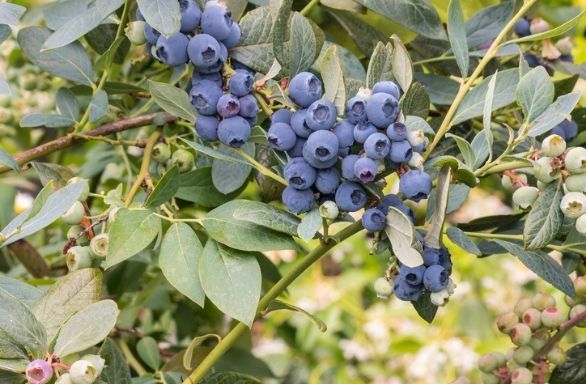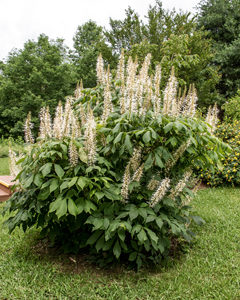Highbush blueberry (Vaccineum corymbosum)
$38.00
Size: 1 Gallon Pot
Highbush blueberry, Vaccineum corymbosum
Type: Shrub
Growth Characteristics Highbush blueberry can grow 6 to 12 feet tall and 6-10 feet wide. It is an upright, multi-stemmed, slow-growing deciduous shrub found naturally in bogs, swamps, and high elevation forests. It is planted for its edible fruit and beautiful red fall color. When planting and the year after, remove all flowers so that the shrub can focus on root and shoot growth. The third year after planting you can prune in the late winter to remove dead wood and maintain the shape of the shrub. Little annual attention is required, except for occasional pruning. Plant 6-12 feet apart.
Hardiness: Climate zones 3-8
Light Requirements: Full and partial sun.
Water Needs: Tolerates wet to dry areas, may need watering in drought
Soil Preference: Can grow in a variety of soil types, but requires acidic soils less than a pH of 6. If the soil pH is too high, it will cause chlorosis (yellowing of leaves).
DISEASE, PEST and Deer RESISTANCE
Deer frequently damage these plants. Frequent diseases.
SITE CONSIDERATIONS
Use highbush blueberry as a hedge or mass planting in edible, pollinator, butterfly, children’s, or rain gardens. Consider grouping them with other acid-loving plants such as hollies, azaleas, and rhododendrons.
Value to Wildlife and Insects
Flowers attract butterflies and bees. Its fruit attracts small mammals, ruffed grouse, wild turkey, black bears, squirrels, and songbirds. The twigs provide food source for deer and rabbits. Birds relish the fruit, so cover shrubs with netting as the fruit ripens.
Availability: 7 in stock





